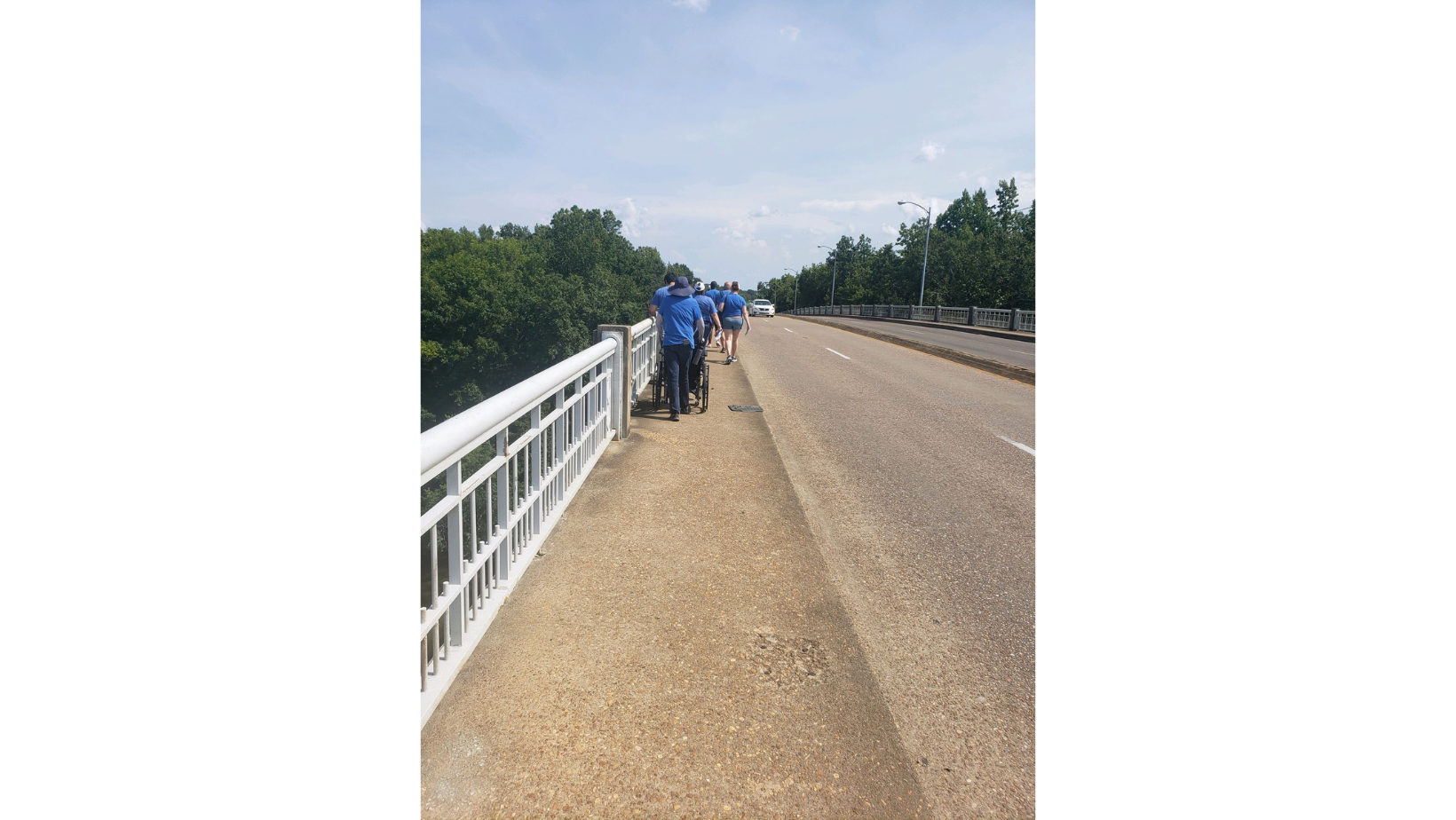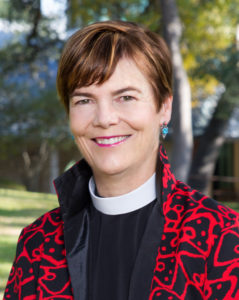By: the Very Rev. Cynthia Briggs Kittredge
One of my favorite depictions of Mary is Elizabeth Frank’s Walking Madonna, a six foot high statue on the grounds of Salisbury Cathedral. Unlike images of Mary that show her a meek and gentle, this piece shows her in striding forward, exuding confident power, a figure of pride and strength. Walking Madonna came back to me during the Seminary of the Southwest’s Civil Rights Pilgrimage to Alabama. At the National Memorial for Peace and Justice in Montgomery, I came upon a sculpture of three black women, and they were walking. “Guided by Justice” by Dana King honors the African American women who participated in the Montgomery Bus Boycott which lasted 381 days, from December 5, 1955, to December 20, 1956.
The women of the Montgomery Bus Boycott walked everywhere, everyday: to work, to church, to school, to grocery stores, to doctor offices, in rain or shine, blazing heat and cold weather. They were harassed, spit at, and threatened with disfigurement and even death. In Dana King’s words, the sculpture “represents the quiet constancy of women determined to make a difference in ways available to them at the time, doing what needed to be done, one step at a time.”[1]
The women radiate determination and power, even the middle one at the front who looks so weary. Their action, their protest, their prophecy is in their walking.
On the pilgrimage the memories of our walking are vivid. Our first stop was at the Kelly Ingram Park in Birmingham where we each took our time to walk the park, setting aside the photo ops and tuning into the feelings, as Reve Nancy Frausto reminded us. As we entered these holy sites, I was aware of the diversity of our band of pilgrims – black, brown, white, old, young, faculty, counseling, divinity, and MAR students. I was aware that I felt internally at home in the group and that outwardly we represented something distinctive: one body, many members. On a hot morning, we walked the Memorial in Montgomery around and under the 800 weathered steel columns, each for a county, inscribed with the names of those who were victims of lynching in that place. On Saturday, we walked around the tiny town of Hayneville in a liturgical procession from jail, to store, to courthouse, with many people from around The Episcopal Church, to honor Jonathon Myrick Daniels, a seminarian, who was shot in front of the store when he saved Ruby Sales. And we walked together across the Edmund Pettus Bridge in Selma. It was a small bridge and still a long walk. There at the Civil Rights Memorial, I read on a monument the inscription of the quotation of John Lewis, “When we pray, we move our feet.”[2]
When we walked together, we built the bond among us as we encountered this potent landscape. Walking went beyond words. By walking we participated in honoring the walking women of Montgomery, we prayed by moving our feet, and, I believe, we tuned into the power of Walking Madonna.
[1] https://www.suffrageforward.org/blog-monumentmondays/monument-mondays-dana-king
[2] “When we pray, we move our feet,” an African proverb, quoted in John Lewis, Across That Bridge: A Vision for Change and the Future of America.
This Fall, Sowing Holy Questions explores personal and professional Reflections on the Black Religious Studies Group Visiting Professor partnership at Southwest, and the seminary’s work toward creating Beloved Community.



